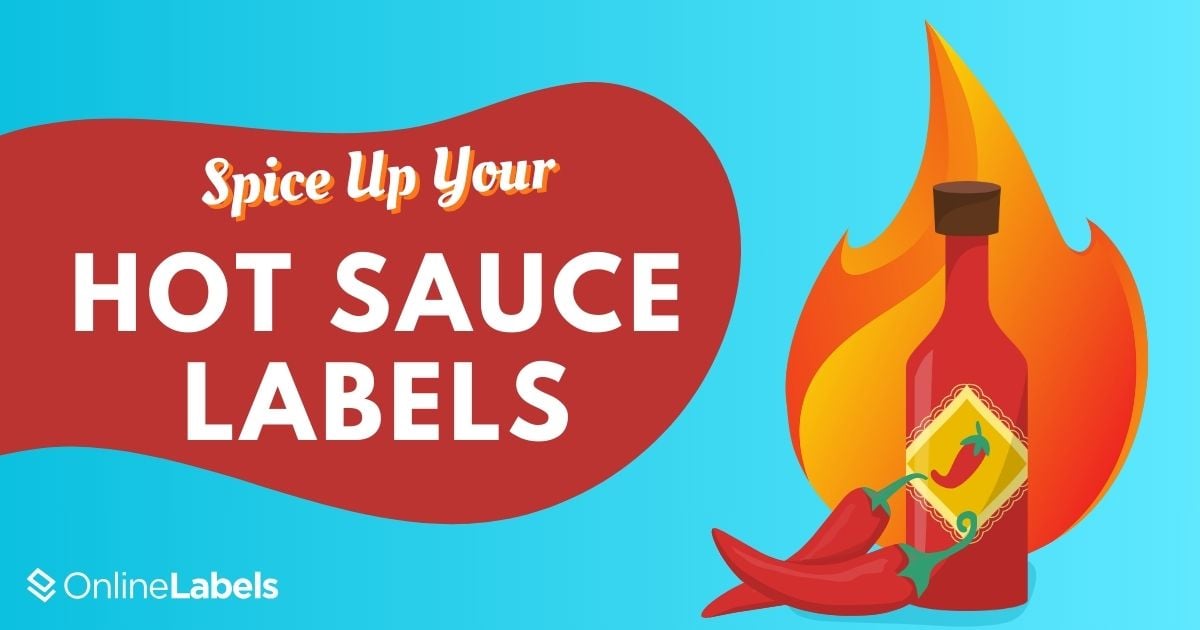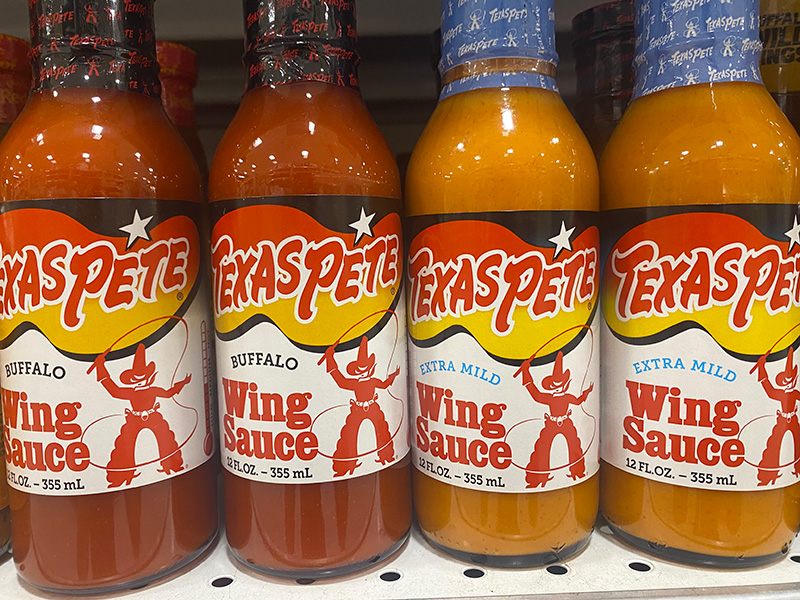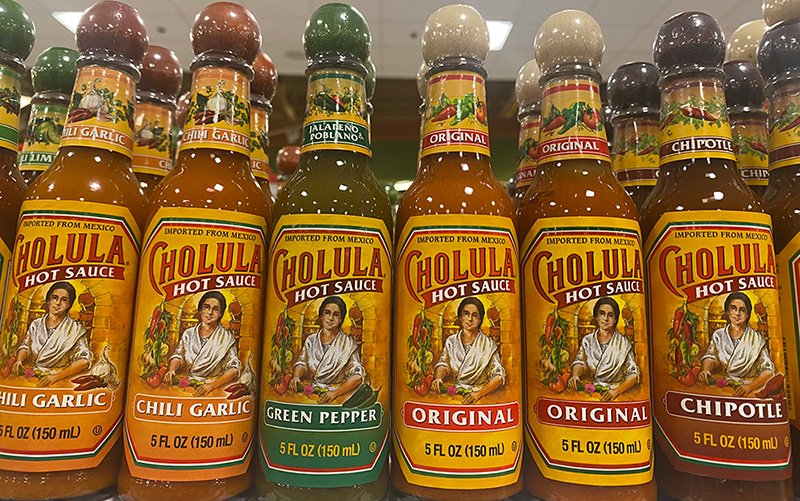Spice Up Your Hot Sauce Labels with Innovative Design Ideas

Ready to spice up your clients’ taste buds just by looking at your products?
As competition heats up in the market, we've put together a guide explaining what draws customers to a hot sauce label and how to adequately communicate crucial product information to your audience.
Analyzing the Importance of Hot Sauce Labels: The Good, the Bad and the Spicy
The food market is currently one of the hardest industries for label creation. With the current demand for allergies (gluten, dairy, lactose intolerance, among others), consumers increasingly rely on food labels to make informed decisions. However, despite the importance of informative labels, many companies in the industry provide limited details on their products.
Hot sauce business owners should take the current misconception of which information is relevant to clients, as an advantage to design labels that clearly meet the needs of the clients.
Understanding Consumer’s Preferences
Getting to know the market is an important attribute when it comes to choosing the right design for hot sauce labels. In the food market, buyers tend to be divided into multiple groups based on needs and preferences. An independent study done by Mahapon Aramsaerewong presented research involving a total of 194 candidates to analyze how hot sauce customers were divided based on their needs and behaviors. The results divided the candidates into four categories:
- Cooks vs. Non-Cooks: this prompt included two groups of people that cook with hot sauce products and people that prefer to purchase food from restaurants or through delivery services. Even though the Cooks had a higher understanding of the product labels, both of the groups relied on taste as well as benefits listed on the packaging.
- Health-Concerned vs. Health Unconcerned: the two groups in this section were divided between people who care about their food intake and people that don’t have concerns. The health unconcerned group, which had 84 candidates, did not consider health concerns, but cared more about the way brands marketed to them.
- Benefit vs Non-benefit Seekers: these groups can be divided between customers that are looking for health and dietary benefits and customers that don’t look for those attributes. Benefit seekers were focused mostly on taste and benefits and valued the design and properties featured in the product. Meanwhile, non-seekers focused solely on taste and brand, and would unlikely challenge the information on the label.
- Label Readers vs. Non-Label Readers: the groups in this section were classified between label reading behavior, with candidates that read the label thoroughly versus a group that barely reads the label. The label readers had similar reactions to the Benefit Seekers, they were more focused on the flavors and the positive attributes of the products.
Nevertheless, the health concerned group formed by 77 candidates were neutral when it came to choosing a hot sauce bottle label for design. They were more concerned about the health benefits on every purchase, and in most cases preferred the ones with more positive attributes.
On the other hand, non-label readers had similar results as the Non-Readers since they relied only on taste and brand. The only difference between these two groups is that the Label readers and the non-label readers had less knowledge on labels; however, they spent more time looking at the product in contrast with the Benefit and the Non-Benefit seekers.
These results demonstrate that even though these groups had different needs, they all focused primarily on the label. Whether it was for the name of the brand, or for its ingredients and composition, every group shared the fact that they look at the labels’ design before getting the product
Innovative Hot Sauce Label Design Approaches
Creating hot sauce labels can be challenging, but its theme offers a creative platform and variety of featured elements to boost the product’s visual appeal. Here’s a list of design ideas to consider when designing hot sauce products.
Cultural and Artistic Symbolism
When creating a hot sauce label, it's important to include cultural or artistic features of where it was created. Several countries including the United States, associate food with the specific cultures or the state where it was produced. Some examples include the Washington apples, Florida’s orange juice and Wisconsin cheese. A journal paper on food place associations showcases research on a variety of food product associations based on the perception of logo design and where it was created. The outcome showed that Texas products were leading in the market and usually featured attributes of the state and its culture. Some of the products that had the most appeal for the participants included Texapeppa, Texacali, and TexasPete. Adding place and cultural symbolism to product labels can be overlooked by most food companies, but if done correctly it can help showcase the cultural symbolism behind it.

Emphasize Color Palette to Trigger Appetite
Choosing a color scheme and the right typography is crucial for the product to stand out and transmit the brand message. Creating custom titles as well as colored illustrations can work to add personality and intrigue to the label. The common color palette used by hot sauce companies are red, orange, and yellow for hotter varieties, and cooler tones of brown, with gradient effects or metallic accents for mild flavors.
Choosing the Right Color Palette
The colors on food packaging play a crucial role in identifying and categorizing products. According to a study done to 65 regular food consumers, customers use images and colors to understand and choose which products to purchase. In this case, the products that contained images or colors that resembled fire are more easily categorized as a spicy sauce than the ones that didn’t have those attributes.

Choosing the Correct Typography for the Label
With an almost endless number of fonts out there, hot sauce business owners can have a hard time deciding which one to choose for their label. Here are a few tips on selecting the right font for specific parts of a hot sauce label.
- Heat Level Communication: one of the most important assets when designing hot sauce labels is to communicate the heat level of the hot sauce. In contrast with other food products, hot sauce labels require a font that has a high readability for flavor and ingredient information. Fonts like Slab Serif are great options because they're bold, thick, and add visual weight and presence to text. Additionally, the font helps elevate visual cues like color gradients, or numerical scales.
- Relating Type to Your Imagery: the first step for choosing the right font is to understand that the images and the letter types are two separate elements on the bottle. The key is to choose a font that shares similarities with the images so they can both work simultaneously. Stencil fonts are a good choice to evoke a sense of ruggedness and industrial appeal that can combine well with more handmade-looking imagery. This type of font can bring about a strong presence and add a touch of fearlessness to the design.
- Personality and Consistency: Typography works to showcase the brand’s personality. When choosing a font, consider if it aligns perfectly to the message of the design. Glyphic serif typeface fonts can bring a sense of tradition and personality to the label design. One example is Friz Quadrata used by the Cholula house brand which provides intricate details and adds a touch of traditionalism to the brand.

Design tip: Make sure that the design uses less than 2-3 fonts in the packaging to prevent oversaturated information in the final design.
Regulatory and Security Compliance with Hot Sauce Labels
Hot sauce labels must have regulatory safety information and meet legal requirements. Having security norms also helps to protect brand reputation so that all legal compliance warnings are followed, some of them include:
- FDA Regulations: in the United States, the Food and Drug Administration (FDA) regulates the food label regulatory norms in the food market. Hot sauce companies must comply with the FDA regulations which include ingredient listing, nutrition facts among other health content claims.
- Product Safety: ensure that the product is produced, packaged and labeled in compliance with food safety standards. Visit the Good Manufacturing Practices (GMP) and Hazard Analysis and Critical Control Points (HACCP) to follow the food requirements for hot sauce labels.
- Country-Specific Regulations: if the products are being exported to different countries, have the labels reviewed by a regulatory expert of that country. Requirements may vary depending on the country.
From Mild to Wild with Enhanced Hot Sauce Labels
Hot sauce labels should cover the main needs of customers, portray crucial design elements and complete regulatory compliance. From outstanding graphics to good typography, these labels invite consumers to purchase a product that will go with their health and flavor needs. Whether it’s the nostalgia evoked by a traditional label through its use of color, or the satisfaction of getting the products that meet their health needs, hot sauce labels play a crucial role in shaping the culinary experience of clients.
OnlineLabels has Spicy Solutions
When it comes to finding the perfect labels for hot sauce bottles, we have the best blank and custom label options for every business size. With a wide range of high-quality label materials and customizable shapes and sizes, we offer clients the flexibility and versatility to create eye-catching labels.


